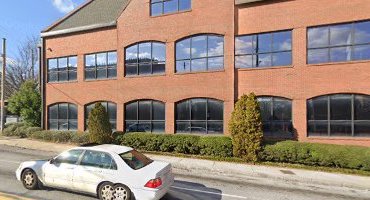Nov 1, 2016
The Associate Director of School and Community Engagement at the Center for Education Integrating Science, Mathematics, and Computing (CEISMC), Dr. Tamara Pearson, leads CEISMC’s partnership with M. R. Hollis Innovation Academy to integrate STEM components in the classroom. She shares her vision for the initiative and her focus throughout the journey so far.
Through a grant from the Blank Foundation, CEISMC is working to integrate a STEM initiative into the curriculum at M. R. Hollis Innovation Academy.
The Vine City school neighboring the Georgia Dome opened its doors this Fall to over 300 K-5th grade students. The partnership seeks to develop a growing list of projects that are aimed to supplement the students’ foundational education.
“This initiative proposes to permeate STEM into every aspect of the school. The process usually takes three to five years,” says Pearson. Dr. Pearson, assumed a direct role in executing the initial steps toward helping Hollis Innovation Academy obtain STEM certification from The Georgia Department of Education. Her work stretches from project planning to working directly with the school.
An effective approach toward STEM Certification, she argues, focuses on professional development of teachers. Equipping educators with the right tools and teaching styles can foster a classroom of critical thinkers.
Pearson and fellow CEISMC K-12 School Support Specialist, Christa Flores, work weekly with three teachers who solely focus on STEM education at Hollis: Linda Howard (K-1st grade), Yori Battle (2nd-3rd grade), and Nichole Jones (4th-5th grade). “[Traditional teaching] involves creating a problem and creating a solution that the students labor for,” shares Pearson. “We want to work towards a teaching style where students find a problem and figure out and create solutions for themselves.”
The STEM-based programs currently being designed for Hollis Innovation Academy come with a range of flexibility so the teachers can craft their own modules and approach. This poses an opportunity to use STEM to develop the students’ soft skills. Focusing on virtues such as empathy, collaboration, and perseverance, the initiative has implemented modules that couple with lessons the students are already studying in the classroom.
In one module, 5th grade students are using an interactive online mapping tool to track the evolution of human rights, connecting the civil rights movement to its effect in today’s world. Much of the technology the students will work with are derived from partners at Community Robotics, Education, and Technology Empowerment Lab (CREATE Lab) at Carnegie Mellon University.
Other modules to be implemented focus on developing a ‘maker culture’ where students are encouraged to build and reinvent things that can suit a specific purpose. Pearson shares her recent experiences searching through oddities in a school warehouse. Finding abandoned couches, fixtures, and countertops, she hopes a similar experience can pose to the next generation, what can we build with this? What can these be used for?
Along with modules serviced at the school, teachers will also get the opportunity to come to Georgia Tech and tour several labs as part of CEISMC’s mission to enhance the relationship between K-12 schools and campus. “Anything that is happening at Georgia Tech started with a kid in elementary school,” shares Pearson on the importance of this key component of the program.
Pearson’s vision for Hollis does not stop there. An emerging field integrates STEM components in a business setting, allowing students to make real life sense of what they learn in the classroom. Pearson hopes to add this field into the curriculum to further kid’s growth not just as students, but as key individuals in society. Pearson adds, “we want to give students skills that they can use in whatever they want to do.”
Written by:
Sabiha Runa
CEISMC Communications





